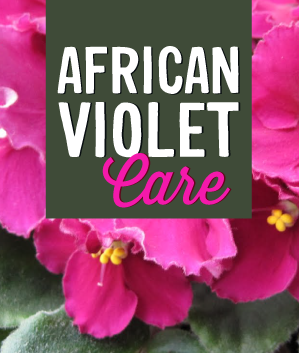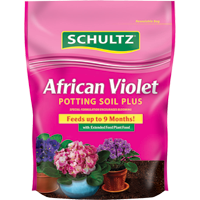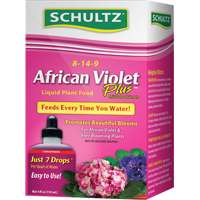
Planting and Repotting
When planting outdoors, African violets require well-drained rich soil, sometimes amended with organic materials such as compost, garden soils, and planting mixes. When planting indoors, be sure to use a potting soil specially formulated for African violets. African violets bloom best when they are slightly root bound, so use a pot slightly smaller than you might use for other indoor plants the same size.
Light, Temperature, and Humidity
African Violets prefer partial shade, moderate to high humidity, and steady warmth. Be sure the temperature ranges between 65 and 70 degrees Fahrenheit consistently. Choose a bright, warm spot with a good amount of indirect light when planting indoors. The most common cause of African violet bloom failure is lack of sufficient lighting. To sustain blooms in the winter, you may need to provide a few hours of artificial lighting each evening.
Feeding
It is best to feed with a water-soluble plant food specially formulated for African violets. This way, they are provided with vital nutrients every time you water.
Watering
When outdoors, the soil should be kept evenly moist, but never soggy or saturated. Use a drip hose or water by hand at the soil level. Overhead sprinkling will damage the fragile velvety leaves that make the plant so unique. When indoors, keep the potting mix evenly moist with tepid to room temperature water, allowing soil to dry to the touch prior to watering again. Using too cold of water and applying the water directly to the leaves will both cause leaf damage.
Insect and Disease Control
African violets are not generally prone to frequent pest and disease problems. The following are a few of the more common issues that you may encounter. Test any sprays recommended on a single leave prior to applying to the entire plant, as African violets can be extremely sensitive to sprays.











